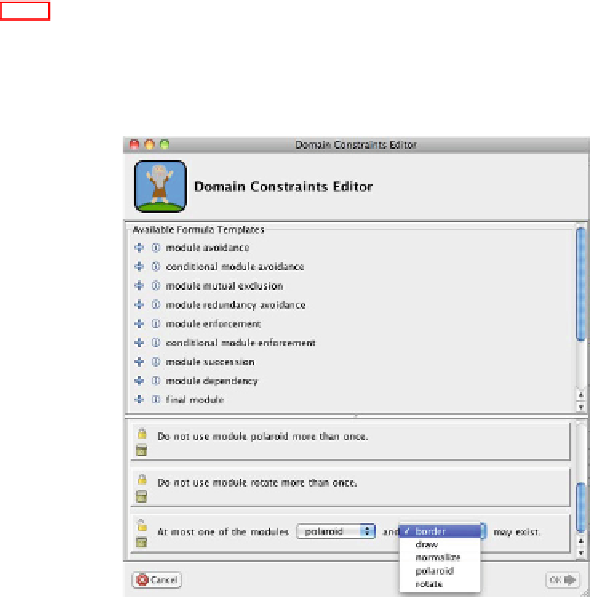Information Technology Reference
In-Depth Information
turned out to be sucient for the most part of the considered application
scenarios, so that only in very few, special cases the parameters of the SIBs
had to be (re-) configured manually in order to obtain fully executable work-
flows. Nevertheless, developing more sophisticated heuristics or even enabling
the framework to perform also instance-based workflow synthesis and thus
properly overcome this issue is a central subject of future work (cf. Section
9.2.1).
Domain-Specific Constraints
Fig. 2.12
PROPHETS' Domain Constraints Editor
The domain-specific constraints must be formalized appropriately, that
is, expressed in SLTL, which is the temporal logic underlying PROPHETS'
synthesis method (cf. Section 2.3.1). As understanding and writing SLTL
constraints can be extremely di
cult for users without background in formal
methods and inconvenient also for those who are familiar with temporal log-
ics, PROPHETS supports constraint formulation by means natural-language
templates. That is, it provides a number of predefined constraints along with
a natural-language equivalent of the SLTL formula that is displayed by the
constraint editor. Figure 2.12 shows PROPHETS' constraint editor in action:
the available constraint templates are displayed in a list in the upper part of
the editor window, all template instances are displayed in the lower part. As
the figure shows, placeholders are used for the services and types within the
templates. The replacements for the placeholders can simply be selected from


Search WWH ::

Custom Search